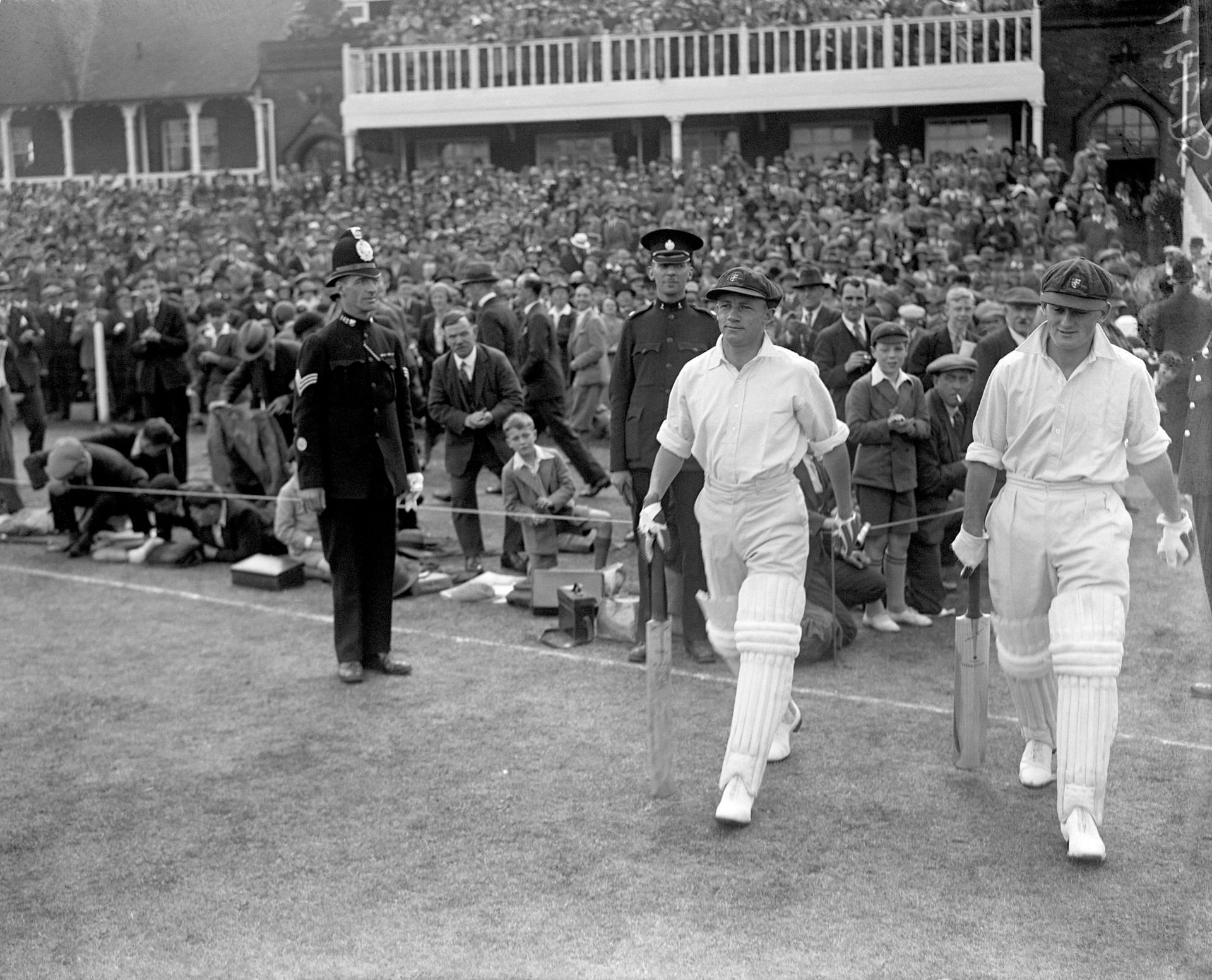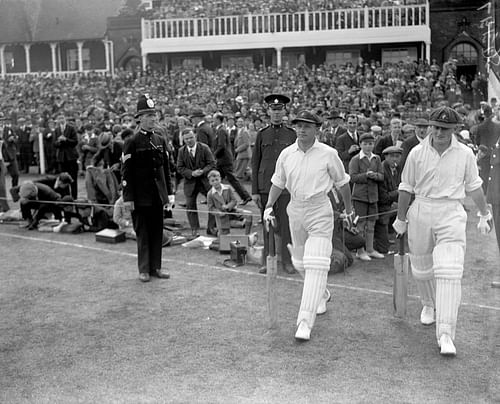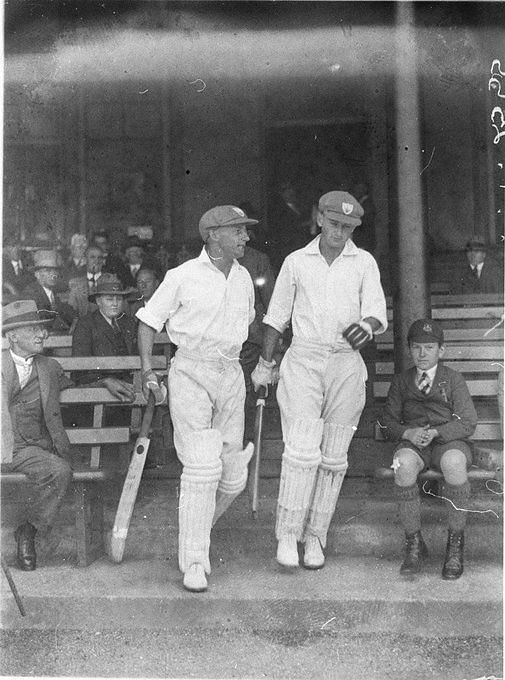
The three brilliant signature innings of Stan McCabe

One of Sir Don Bradman’s compatriots in the Australian middle-order, through the 1930s, was Stan McCabe. He was every bit a top-class player, orthodox yet aggressive, and one of the least celebrated.
His status was perhaps akin to laxman" target="_blank" rel="noopener noreferrer" data-is-sponsored="false">V.V.S. Laxman of modern times, ever the artist but forced to live in the shadows of the mighty Sachin Tendulkar, the reliable Rahul Dravid, the delightful Sourav Ganguly, and the maverick Virender Sehwag.
McCabe’s deeds were eclipsed by the prodigious run-getting of Bradman and Bill Ponsford.
Just as Laxman’s memorable knocks against the world’s best team at the time, Australia - notably his 281 at Kolkata in 2001 - remain etched in the minds of everyone, so do the brilliant innings of McCabe for over eight decades.
Stan McCabe's courageous and defiant 187 in the Bodyline series
Stan McCabe's courageous and defiant 187* at Sydney in the first Test of the 1932-33 Bodyline series was a terrific riposte under daunting circumstances.
Bradman did not play that Test due to his dispute with the Australian Board of Control. As Stan McCabe stood up boldly to the short-pitched stuff and hooked it disdainfully, critics concluded that he handled Douglas Jardine’s abominable leg-theory with greater finesse than Bradman.
Learie Constantine in his The Young Cricketer’s Companion wrote:
“When Larwood went to Australia and tied Bradman and most of the rest of them in sheep bends and clove hitches and made some batsmen drop their bats and others sit on their wickets, it was McCabe who improvised a daring hook to the leg boundary and made a brilliant century against bodyline, as he has done against most other kinds of bowling without the least favouritism.”
McCabe's triumph through skills over physical distress at Johannesburg
If his display at Sydney revealed a tough mind, Stan McCabe’s performance at high altitude at Johannesburg’s Old Wanderers in 1935-36 was a triumph of skill over limitations imposed by physical distress.
With Australia at 85/1, chasing another 314 for a win on the fourth and final day, Stan McCabe, short of breath as a result of the rarefied air, and bleary of eye for the sleepless night he had spent, was in no condition to bat.
He informed Vic Richardson of his discomfort. The skipper, in no position to oblige, urged his star batsman - Bradman could not join the tour - to continue his innings, then anchored at 59:
“If the altitude gets to you, don’t run. Just hit fours.”
Left with no option, Stan McCabe breezed out to the crease with the other not out, Jack Fingleton. Deliveries leapt and turned square on the dusty, wearing track. But Stan McCabe’s elegant shots found the gaps time and time again.
He raised his hundred in 91 minutes, fourth quickest at the time after the feats of Jack Gregory (70 minutes in 1921-22 at this very venue), Gilbert Jessop (75 minutes in 1902), and James Sinclair (80 minutes in 1902-03).
He clocked up an exact 100 before lunch, carving out 20 boundaries. Australia now needed 182 runs to win in two full sessions. Fingleton offered a broad blade and when he was castled for 40, the partnership was worth 177, of which McCabe’s share was 148. Fingleton recalled,
“McCabe’s innings seemed like a crazy dream to me.”
As the thunderclouds drifted in from the northwest, the South African captain Herbert Wade appealed against the light on the plea that Stan McCabe’s ferocious strokeplay was endangering his fielders!
It was still only 2.45 in the afternoon and soon the heavens opened up with Stan McCabe on 189, and Australia poised at 274 for two.
Ray Robinson wrote in Between the Wickets:
“McCabe’s brilliance had so transformed the situation that, instead of struggling to stall off defeat, the Australians were playing like winners with 125 more to get and eight wickets in hand. He had batted three and a quarter hours for his 189, while 66 were scored at the other end. He hit 29 fours, probably a record for a Test innings under 200.”
He was indeed following his skipper’s instructions to a tee, and in the process, South African Dudley Nourse’s second innings 231 was forgotten.
McCabe's breathtaking strokeplay at Trent Bridge
The third signature Stan McCabe knock was at Trent Bridge in 1938, marked by exquisite strokeplay.
He came to the crease at the fall of Bradman’s wicket. It was a breathtaking innings of 232 in only 230 minutes, during which eight of his partners departed, having managed a mere 68 in all, extras included. The next highest was Bradman’s 51.
It was then the second-fastest double century, in 223 minutes, after Bradman’s (in 214 minutes in 1930), and a shade quicker than Trumper’s (226 minutes in 1910-11).
Vic Marks noted:
“The wicket was a lot easier than the time Jessop turned the tide, but McCabe’s strokeplay was purer with scarcely a hint of risk, and accompanied by masterly manipulation of the strike.”
So awesome was the strokemaking that Bradman summoned his players - some of whom were playing cards - to the balcony, telling them:
“You won’t see strokeplay like this again."
Stan McCabe hit 72 out of the last-wicket stand of 77 with Fleetwood-Smith in a matter of 28 minutes.
The full significance of the innings was elaborated by Denzil Batchelor, when he observed:
“McCabe had done a unique thing. Many men have won matches off their own bat. On this wicket, and with England’s skyscraping score, such a feat was not possible - so McCabe had done more. He had come in at a moment in history when it seemed certain that the sun was about to set on a long period of Australian ascendancy. McCabe, by his own efforts, had stopped the sun, and saved the Australian empire.”
The series was ultimately drawn 1-1.
Nicknamed ‘Napper’ for his striking resemblance to Napolean, he rekindled nostalgia for the strokeplay of Trumper and Macartney. As Ken Piesse wrote,
“Impeccable footwork and his indomitable spirit in adversity made him one of Australia’s true greats.”
Constantine was of the opinion that:
“McCabe had a great range of strokes and, though not such a complete master of the balls on the off-stump and just outside as Wally Hammond was, he was very strong at forcing strokes towards the on-side. I remember watching McCabe in a Test hitting across Verity’s leg-break and carting it round to the on-side. Hardly any batsman who has ever lived could have done it; yet McCabe brought stroke after stroke."
Constantine continued:
“They all came off and the result was a spectacular and sparkling innings. If he had missed one of those patient, penetrating balls by the slightest bit of mistiming, the result would have been a dismissal that looked terrible - the village blacksmith trying his arts on the past master of English bowling. Success, you see, excuses itself - ‘the head of the table is wherever McGregor sits’.”
Stan McCabe made 2,748 runs in 39 Tests at an average of 48.21 with 6 hundreds, and he scored at a very rapid rate. When he died in 1968 at the age of 58 after falling from a cliff in Sydney, the game lost one of its most popular figures.
(Excerpt from Indra Vikram Singh’s book ‘Don’s Century’).

